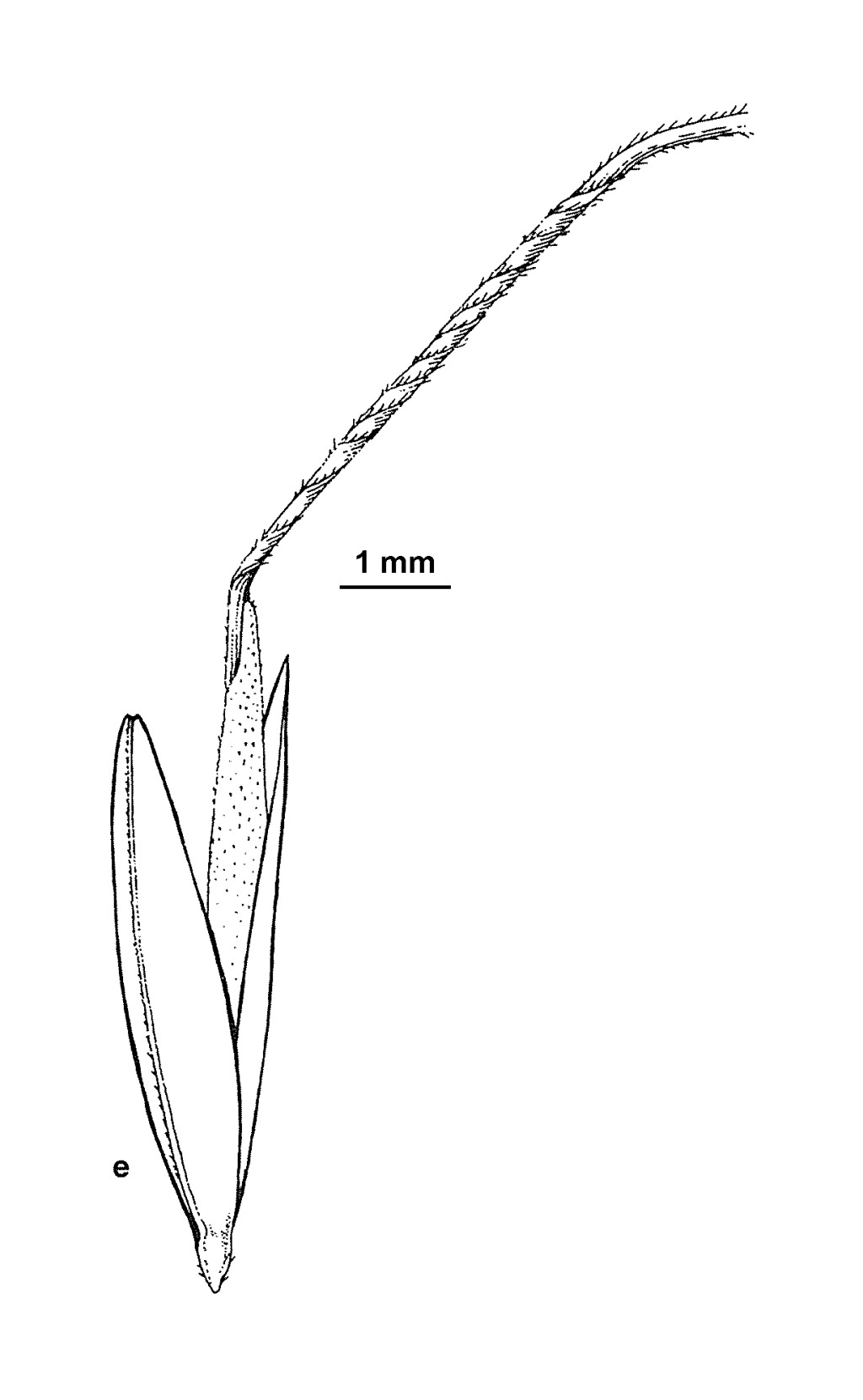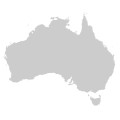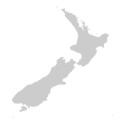Dichelachne sieberiana
Trin. & Rupr.Slender to rather robust; culms erect, 30–100 cm high, typically scabrous, particularly about the nodes, or pubescent, rarely glabrous. Leaves scabrous, usually shortly hairy; blade flat or folded, to 15 cm long, 1–3 mm wide; ligule membranous, truncate, 0.5–1.5 mm long. Inflorescence sparse, 4–25 cm long, variable, with short or long, apressed or spreading branches; glumes acute, 3–7 mm long, the upper c. 1 mm longer than lower; lemma exceeding lower glume by up to 2 mm, densely scabrous; awn inserted c. 0.5 mm from lemma apex, 10–15 mm long, distinctly twice bent (the upper bend often almost a right-angle), the column differentiated, strongly twisted at maturity. Flowers Nov.–Mar.
Wim, VVP, VRiv, GipP, OtP, Gold, CVU, NIS, EGL, EGU, HSF, HNF, OtR, MonT, VAlp. Also NSW, Tas. Naturalized in New Zealand. Appears to favour elevated rocky sites, mostly in the east (e.g. Cobbanah near Dargo, Buchan area, Rocky Plain near Wulgulmerang, Genoa Peak), with a few lowland occurrences to the west (e.g. Lorne, Anglesea, Langwarrin, Phillip Is., Traralgon).
Walsh, N.G. (1994). Poaceae. In: Walsh, N.G.; Entwisle, T.J., Flora of Victoria Vol. 2, Ferns and Allied Plants, Conifers and Monocotyledons, pp. 356–627. Inkata Press, Melbourne.
 Spinning
Spinning


